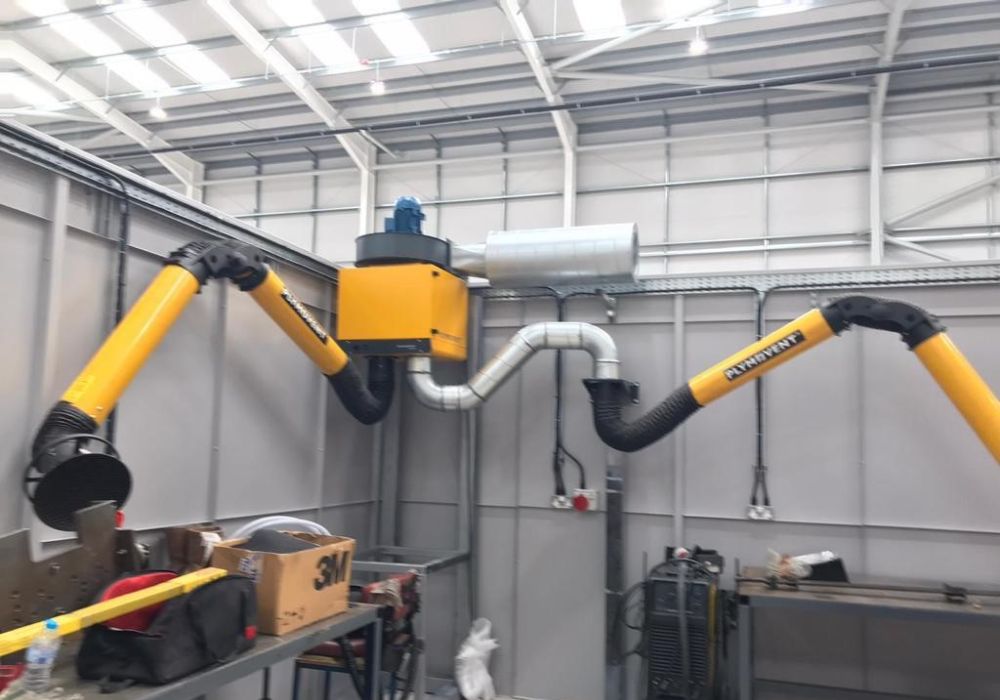Welding fumes: protecting your workforce
What are welding fumes?
Welding fumes consist of a combination of gases and particles of various sizes. It is formed when metals are heated above their melting point; this then causes them to vaporise and condense into fumes. The fumes consist of fragments from disposable products such as wire and flux material.
There is a wide range of different welding processes which vary depending on the type of function it is needed for. The most common techniques are:
- Shielded Metal Arc Welding (also known as Manual Metal Arc Welding).
- Gas Tungsten Arc Welding or Tungsten Inert Gas Welding
- Flux Cored Arc Welding.
- Gas Metal Arc Welding is also known as Metal Inert Gas Welding or hardwire welding.
- Plasma Arc Welding, Plasma Arc Cutting and Gouging.
- Submerged Arc Welding.
- Resistance Spot Welding.
- Air Carbon Arc Cutting and Air Carbon Arc Gouging.
- Oxyfuel Gas Welding, Cutting and Heating (oxygen-acetylene [oxyacetylene] or oxygen-propane [oxy-propane] mixtures which are the most common fuel mixtures used.
What risks are associated with welding?
With the welding procedure including potentially hazardous methods such as cutting and brazing operations, it is essential to consider the risks and take action suitably carefully. These risks may be influenced by the composition and exposure levels from welding fumes, gases, and ultraviolet radiation.
Safety hazards associated with these processes include burns, eye damage, electrical shock, cuts and fires and explosions.
As well as safety hazards, health issues can also eventually trigger problems. Some of these issues are: respiratory irritation, metal fume fever, lung cancer, skin cancer, damage to the nervous system, and asphyxiation.
Aside from it being a legal requirement to protect your worker’s health, it can positively affect them and your company; here are some examples as to why:
- It builds employees’ security and trust in addition to boosting their morale.
Reduces downtime caused by illness and accidents means less disruption – and saves the business money.
- It reduces absences, ensuring that your workplace is more efficient and productive.
Implementing risk management factors is vital; these can consist of:
- Ensuring any exposure from welding fumes is monitored using relevant, helpful engineering controls.
- Ensuring appropriate controls are provided for all welding based activities.
- Providing sufficient Protective Equipment) to help to control any risks that may derive from any lingering fume where engineering controls may not be able to regulate any possibilities of exposure.
- Making sure all engineering controls are accurately used, maintained well and subject to thorough examination when and where required.
Some methods of controlling health-related risks from welding fumes are:
- Using alternate cold joining procedures.
- Welding in a way that produces less fume.
- Using LEV systems
- Wearing Respiratory Protective Equipment (RPE) and personal protective equipment (PPE).
- Maintaining control measures and good ventilation.
- Ensuring that those within the welding industry understand the risks and how to use controls properly.
- Improving health and safety standards within your business. The IOSH provides training courses to help you meet your requirements at all levels.
As we’ve discovered through the exploration within this blog post, several of these hazards can be controlled with elimination and substitution controls, engineering controls, work practices and personal protective equipment.
Air testing can be performed to help identify the necessary control measures, determine health and safety risks and worker exposures, risk considerations, and professional hygiene.

